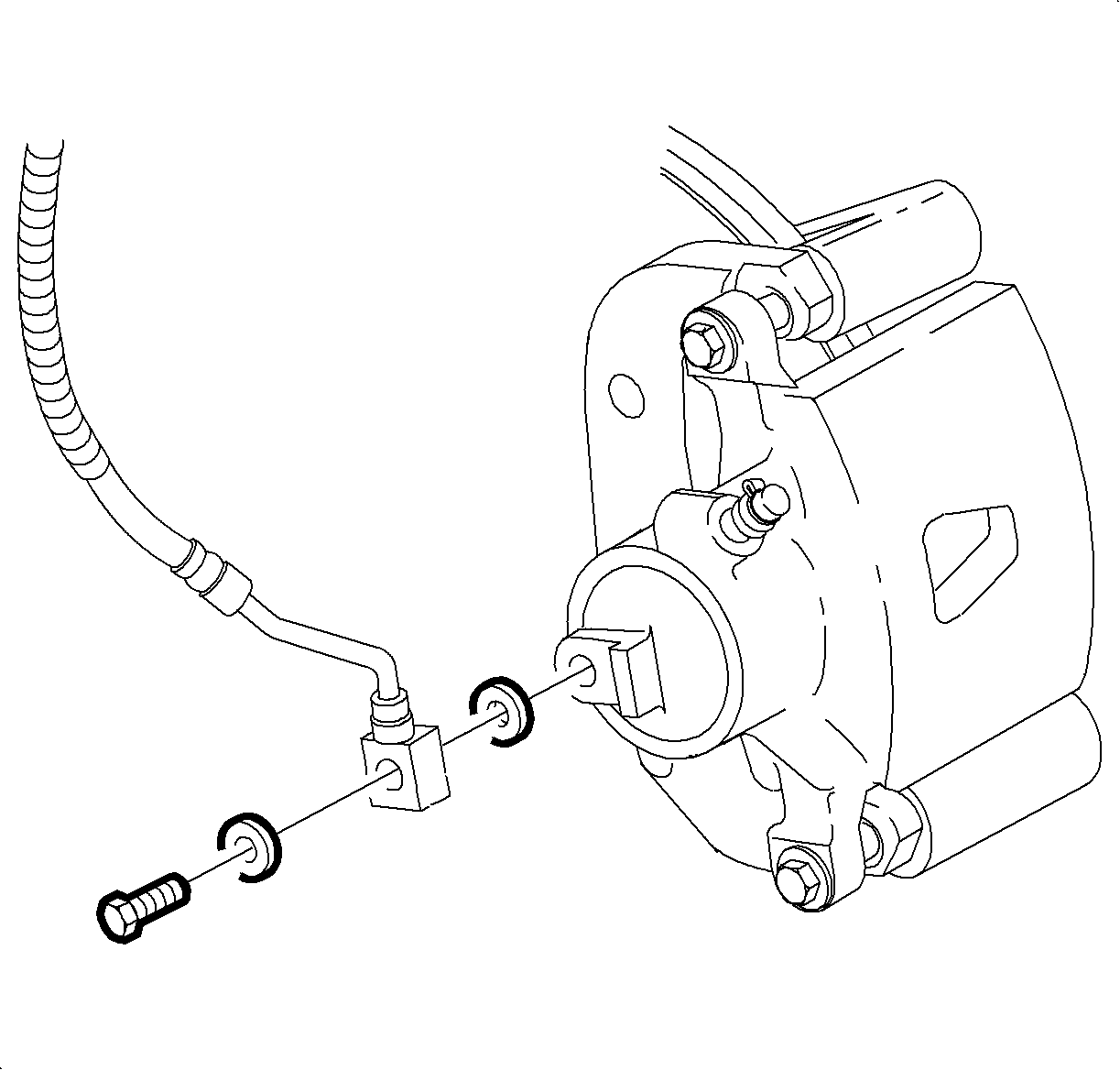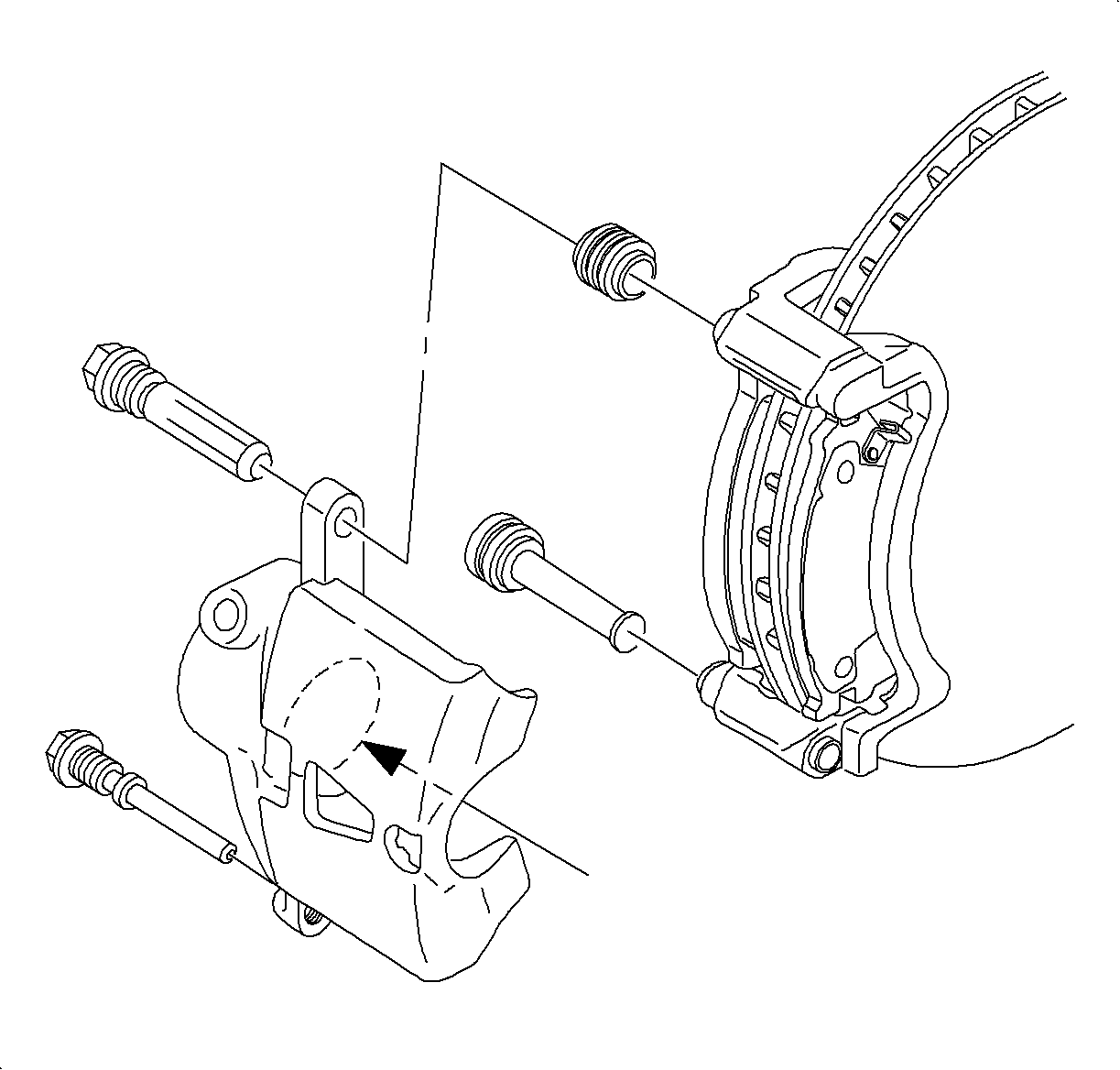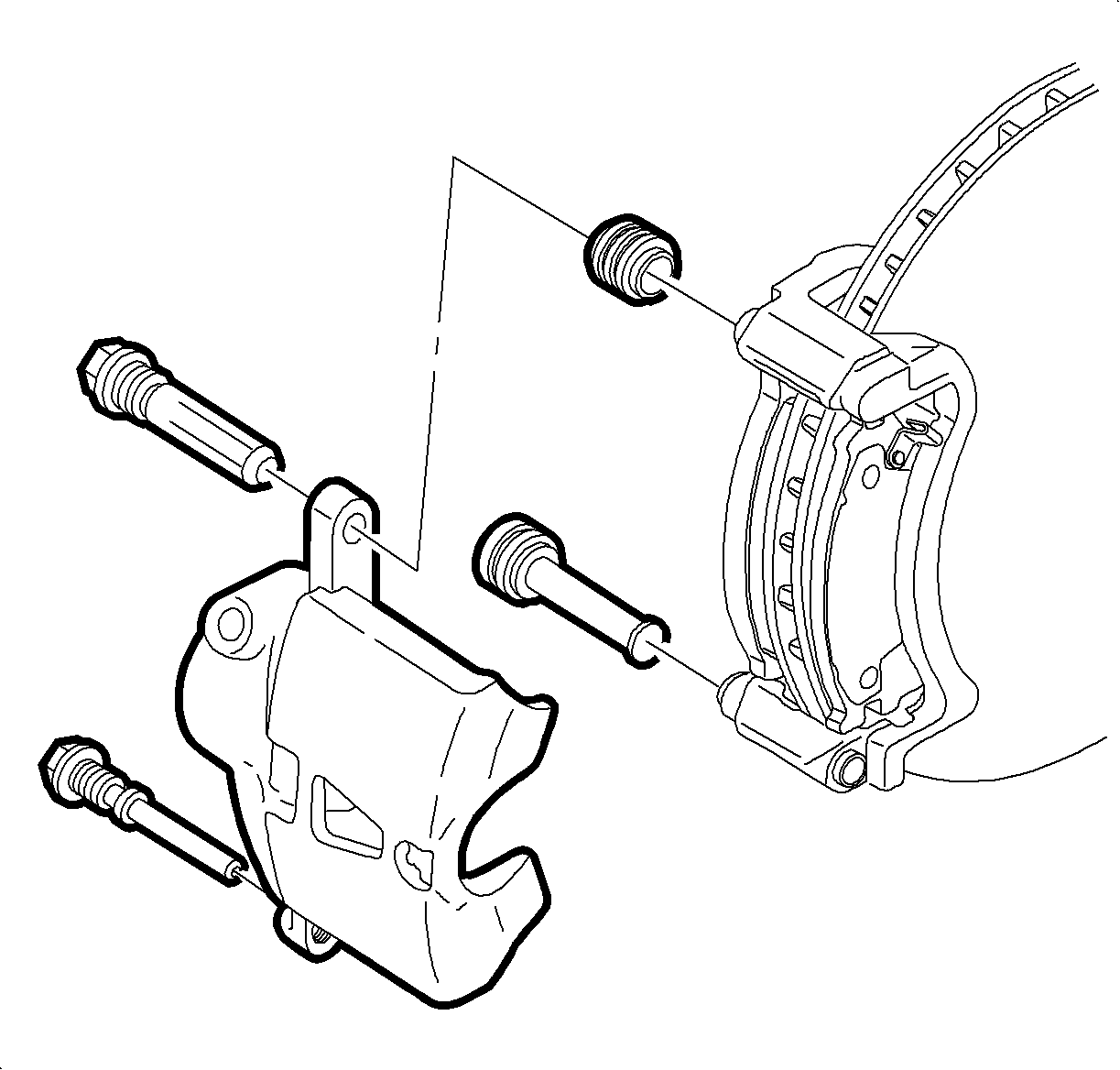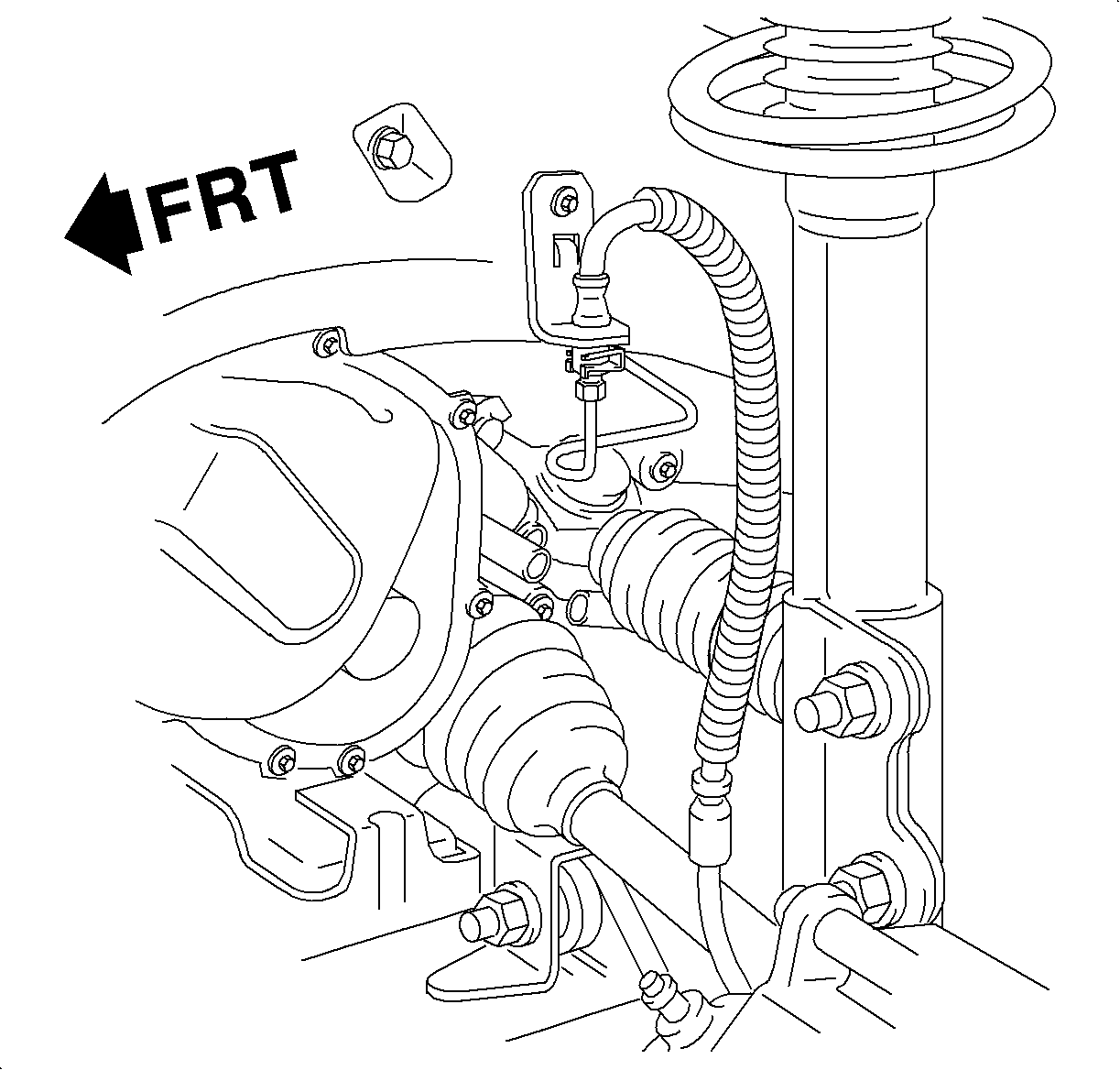Removal Procedure
- Raise the vehicle on a hoist.
- Remove the wheel and tire assembly corresponding to the caliper being removed.
- Remove the brake hose from the caliper. Plug openings in the caliper and brake hose to avoid fluid loss and contamination.
- Remove the lock pin and the guide pin.
- Remove the caliper from the caliper support, being careful not to damage the pin boots.
- Remove the lock pin and the guide pin boots from the caliper support.
- Inspect the following:

Caution: Ensure that the vehicle is properly supported and squarely positioned. To help avoid personal injury when a vehicle is on a hoist, provide additional support for the vehicle on the opposite end from which the components are being removed.

| • | The lock pin and the guide pin boots for deterioration. If damaged, replace. |
| • | The piston boot for deterioration. If damaged, overhaul the caliper. |
| • | The lock pin and the guide pin for damage or corrosion. Replace if damaged or corroded, do not attempt to clean away corrosion. |
Installation Procedure
- Make sure the caliper piston is bottomed fully in the caliper bore.
- Make sure the brake pads and the pad clips are correctly installed in the caliper support.
- Lubricate the pin boots with silicone grease.
- Install the lock pin boot into the caliper support.
- Install the guide pin boot onto the caliper body.
- Install the caliper body onto the caliper support.
- Lubricate the straight section (not threads) of the lock pin and the guide pin with silicone grease.
- Install the lock and guide pins.
- Rotate the brake hose so that it loops to the rear and connect the brake hose to the caliper with NEW washers.
- Bleed the brakes. Refer to appropriate brake bleeding procedure.
- Position the wheel and tire assembly onto the hub.
- Install the wheel nuts and tighten in a crisscross pattern. Repeat the tightening pattern to be sure the torque is correct.
- Lower the vehicle from the hoist.

Important: Remove rust and corrosion from caliper brackets and spring clips. If installing used brake pads, remove rust and corrosion from the ends of the brake pads. Make sure the brake pads move freely in the caliper brackets when the brakes are assembled.

Important: Make sure the lock pin boot passes all the way through the caliper support.
Important: Use the lock pin as a tool to assist installation.
Notice: Be careful not to damage piston, bore, or retainer groove.
Important: Compress the pin boots by hand as the caliper moves into position.
Notice: Refer to Fastener Notice in the Preface section.

Notice: Make sure guide and lock pin boots are properly aligned prior to pin installation, or boot damage may occur.
Notice: Make sure front brake hose is routed as shown with loop to the rear. Be careful not to install front brake hose with a twist. Incorrect front brake hose installation could bring hose into contact with wheel. Brake failure could result.
Tighten
Tighten the lock/guide pin-to-brake caliper to 36 N·m (27 lb ft).

Tighten
Tighten the brake hose-to-brake caliper to 49 N·m (36 lb ft).
Notice: Before installing wheels, remove rust or corrosion from wheel mounting surfaces and brake rotors/drums. Failure to do so can cause wheel nuts to loosen in service.
Tighten
Tighten the wheel nut to 140 N·m (103 lb ft).
